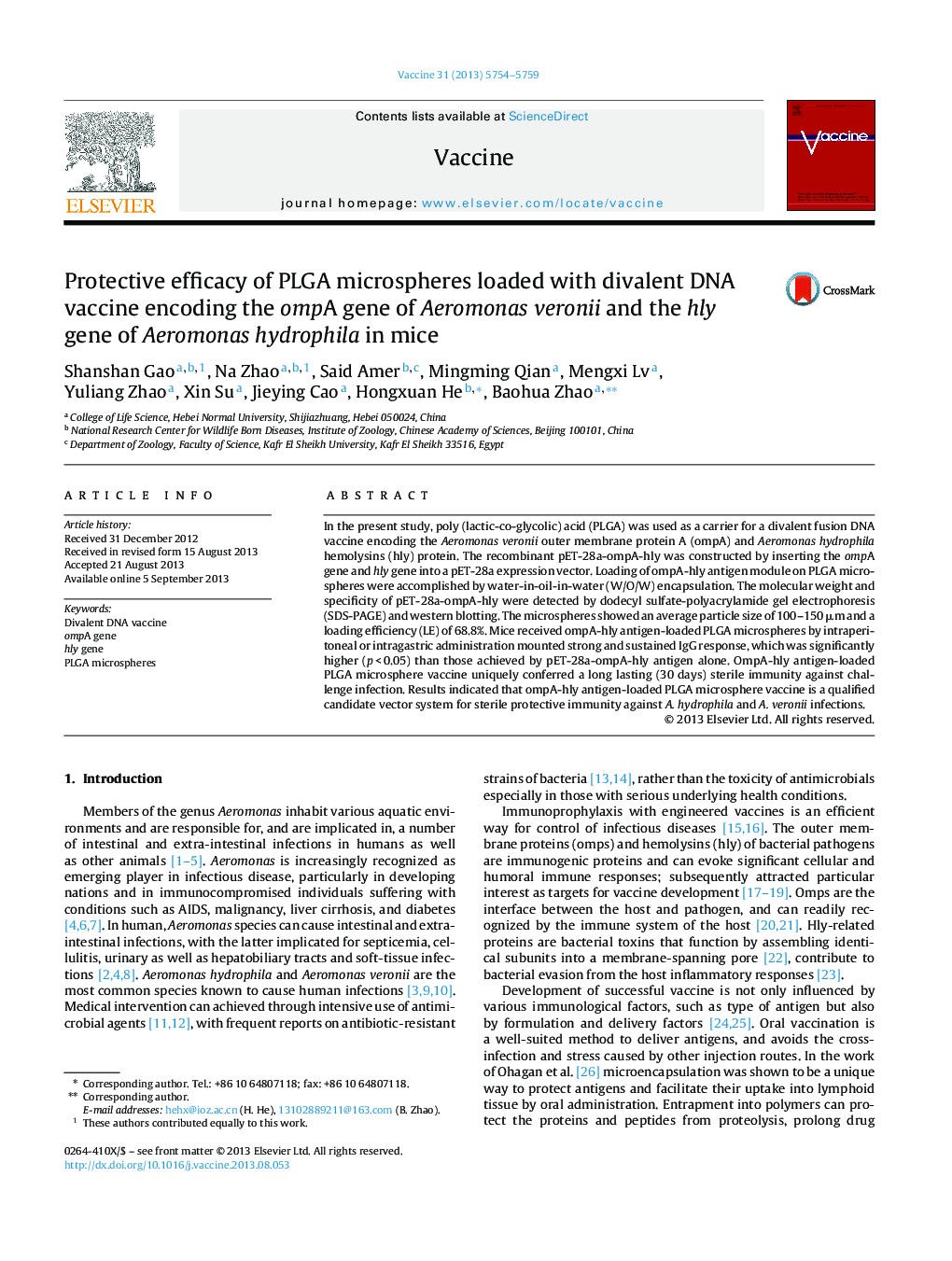| Article ID | Journal | Published Year | Pages | File Type |
|---|---|---|---|---|
| 10965894 | Vaccine | 2013 | 6 Pages |
Abstract
In the present study, poly (lactic-co-glycolic) acid (PLGA) was used as a carrier for a divalent fusion DNA vaccine encoding the Aeromonas veronii outer membrane protein A (ompA) and Aeromonas hydrophila hemolysins (hly) protein. The recombinant pET-28a-ompA-hly was constructed by inserting the ompA gene and hly gene into a pET-28a expression vector. Loading of ompA-hly antigen module on PLGA microspheres were accomplished by water-in-oil-in-water (W/O/W) encapsulation. The molecular weight and specificity of pET-28a-ompA-hly were detected by dodecyl sulfate-polyacrylamide gel electrophoresis (SDS-PAGE) and western blotting. The microspheres showed an average particle size of 100-150 μm and a loading efficiency (LE) of 68.8%. Mice received ompA-hly antigen-loaded PLGA microspheres by intraperitoneal or intragastric administration mounted strong and sustained IgG response, which was significantly higher (p < 0.05) than those achieved by pET-28a-ompA-hly antigen alone. OmpA-hly antigen-loaded PLGA microsphere vaccine uniquely conferred a long lasting (30 days) sterile immunity against challenge infection. Results indicated that ompA-hly antigen-loaded PLGA microsphere vaccine is a qualified candidate vector system for sterile protective immunity against A. hydrophila and A. veronii infections.
Keywords
Related Topics
Life Sciences
Immunology and Microbiology
Immunology
Authors
Shanshan Gao, Na Zhao, Said Amer, Mingming Qian, Mengxi Lv, Yuliang Zhao, Xin Su, Jieying Cao, Hongxuan He, Baohua Zhao,
